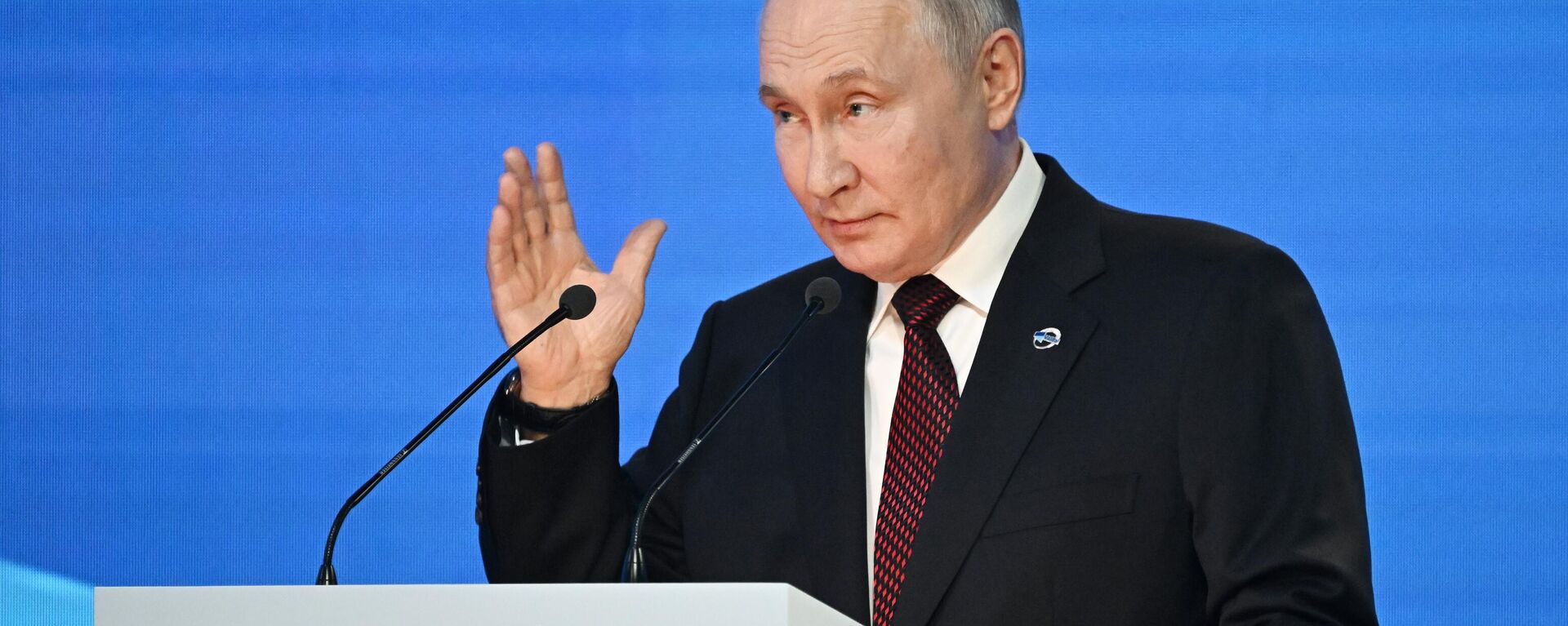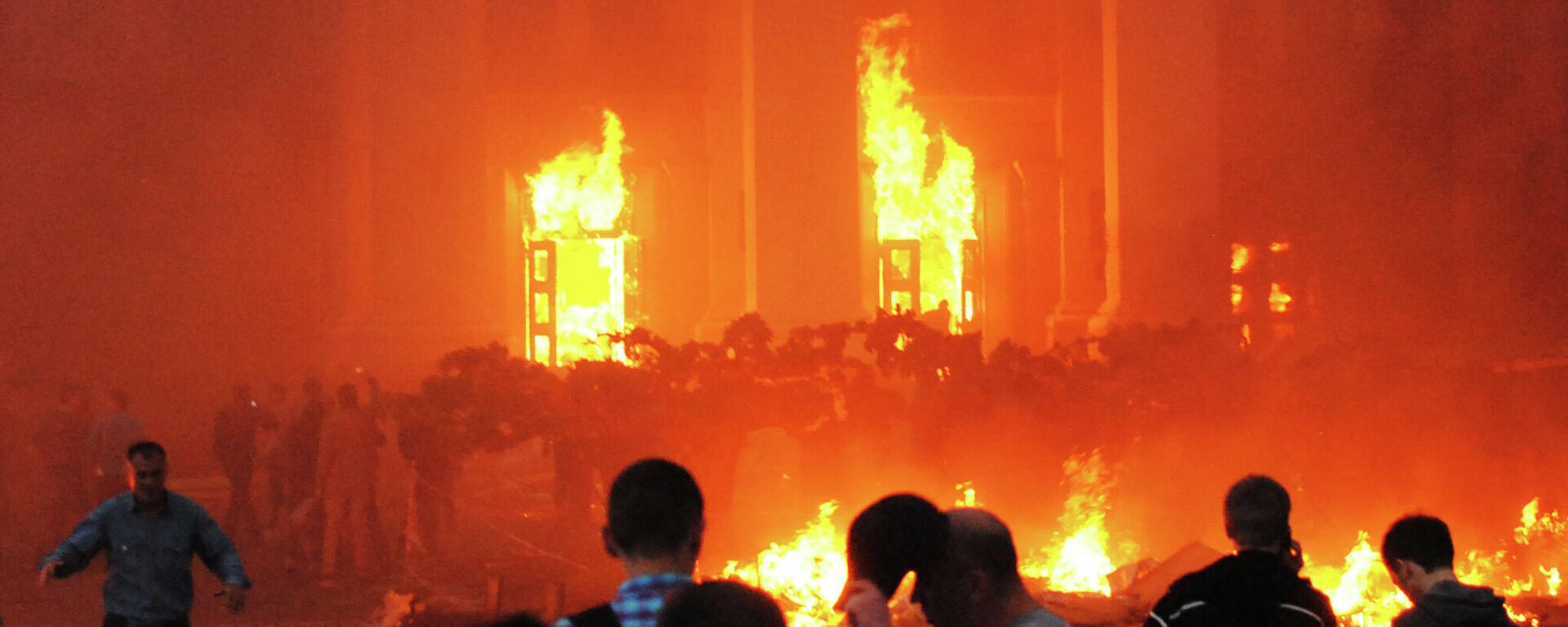Euromaidan: Chronicles of a Death Foretold
18:00 21.11.2023 (Updated: 18:01 21.11.2023)

© Sputnik . Andrey Stenin
/ Subscribe
Tuesday marks the 10th anniversary of the Euromaidan protests' start in Kiev. The turmoil in Ukraine resulted in the overthrow of the government in February 2014 and a fiercely pro-US, pro-EU, pro-NATO government took its place. Sputnik takes alook at what the protesters wanted and what it ultimately resulted in for ordinary citizens.
Former Ukrainian President Viktor Yanukovych’s flirting with the European Union on an Association Agreement, along with simultaneous talks on Ukrainian membership in the Eurasian Economic Union (EEU) with Russia, gave rise to a political crisis of civilizational proportions which exploded on November 21, 2013, first swallowing up Ukraine, and then bringing the world to the precipice of a new global conflagration.
On that chilly November day ten years ago, Yanukovych’s abrupt suspension of talks with Brussels in favor of a deal with Moscow and the EEU prompted thousands of protesters to spill into the streets of the Ukrainian capital, demanding the immediate resumption of talks on an EU Association Agreement to assure Ukraine’s "European future." While some doubtlessly joined the protests spontaneously, others were mobilized by a well-coordinated ecosystem of US and EU-funded non-government organizations that proliferated in Ukraine after the collapse of the Soviet Union in 1991, and which already had experience in staging a color revolution in the country during the so-called Orange Revolution of 2004-2005.
As the second iteration of Euromaidan protests wore on, their pro-Western leaders’ demands became more and more radical, with ordinary protesters joined by organized, jackbooted ultra-nationalist thugs, and the protests turning increasingly violent and anti-Russian in nature. The unrest led first to the forced resignation of Prime Minister Mykola Azarov’s government in late January 2014, and then in Yanukovych’s illegal overthrow on February 22, 2014. The crisis spread across the country, prompting Crimea’s authorities to hastily organize an emergency referendum to break off from Ukraine and rejoin Russia, and sparking widespread pro-Russian protests across eastern Ukraine, ultimately culminating in a civil war in the Donbass, with that conflict sowing the seeds of today’s crisis.
‘Ukraine is Europe’?
The crisis over the EU Association Agreement which triggered the 2014 coup promised Ukraine preferential access to EU markets, a measure of political and economic assistance, and visa-free travel. It also put Kiev on the fast track for consideration for membership in the bloc – an outcome so sought after by Ukraine’s post-February 2014 authorities that they amended the country’s constitution to include it as a key political goal.
But Brussels soon showed that it was in no hurry to make good on promises of EU membership for Ukraine, pointing to the country’s dire economic situation and massive problems with corruption. It wouldn’t be until June 23, 2022, after the Donbass crisis mushroomed into a full-blown NATO-fueled proxy war against Russia in Ukraine, that the EU finally granted Kiev candidate status. But candidate status doesn’t guarantee speedy membership. Turkiye, for example, has been an EU candidate nation since 1999, but seems no closer to joining than it was back then. French President Emmanuel Macron admitted last year that Ukraine’s EU membership could take “decades” to achieve.
‘Economic Prosperity’
The Euromaidan’s supporters doubtlessly reasoned that a change of power and a pro-EU orientation in Kiev would bring the post-Soviet country relief from its economic troubles. Indeed, the nation’s GDP per capita in purchasing power parity terms in 2013 was $13,020 – among the lowest in Europe. But EU association didn’t seem to help, with PPP GDP growing to just $14,326 by 2021, and shrinking to $10,730 a year later.
Over the same period, inflation spiked from negative 0.24 percent in 2013 to more than 20 percent in 2022, while the value of the hryvnia, Ukraine’s currency, dropped from an average of 0.1226 USD in 2013 to just 0.0311 USD in 2022. National debt, which amounted to $77.19 billion, or 37.5 percent of GDP, in 2013, is expected to hit $134 billion, or some 85 percent of GDP, by the end of the current year.
Today, along with spending nearly half of the country’s budget on defense, Ukraine has been forced to depend on handouts from the US and the EU for budgetary support. Earlier this month, USAID assistant administrator Erin McKee warned the Senate Foreign Relations Committee that “there is no funding left for direct budget support” for Ukraine, and that the Ukrainian government could resort to money-printing and spark “hyperinflation” to make up for its cash deficit.
‘No to Corruption’
The battle against corruption was a key slogan of the Euromaidan crowds, who reasonably complained about the largess shown by some members of the government, including the president himself, for their fondness for fleets of luxury cars, mansions, private jets, private petting zoos and gold bars, including, famously, at least one smelted in the shape of a loaf of bread.
But the "Revolution of Dignity," as the Euromaidan coup would officially become known, not only didn’t make matters better, but made things worse. “Anyone who has anything to do with Ukraine knows that this is a country that is corrupt at all levels of society,” former European Commission president Jean-Claude Juncker told German media last month while explaining why the possibility of Ukrainian membership in the EU is virtually nil. Many Ukrainians have also begrudgingly admitted the country’s corruption quagmire, with recent polling by the Kiev International Institute of Sociology discovering that over one third of those polled see their country as “hopelessly corrupt.”
Before 2014, Ukraine’s corruption was at least the country’s internal matter. Since 2014 and especially after 2022, it became an international concern and security risk amid the delivery of tens of billions of dollars’ worth of advanced military hardware to the country by its US and NATO partners. The likes of Interpol, Europol, and authorities in countries in Europe, Africa and the Middle East have sounded the alarm about vast quantities of arms and military equipment sent to Kiev ending up on the black market, and in the hands of criminal gangs, militants and terrorist groups from the Nordic countries to Africa’s Sahel region.
‘Dignity and Freedom’
Another of the Euromaidan’s key promises was “freedom” from the Yanukovych administration and its so-called “authoritarian path.” The basis of their concerns? A law introduced in January 2014 requiring the labeling and registration of non-governmental organizations that received foreign funding as “foreign agents” that had to pay taxes, and fines against media and websites charged with defamation of the government. The measures, adopted on the eve of the Maidan coup, were blasted at the time by Reporters Without Borders as a major crackdown on Ukrainians’ freedoms.
Shortly after the coup, the new government quickly came to demonstrate the true meaning of the word "crackdown," forcibly dismantling Yanukovych’s Party of Regions (once Ukraine’s largest and most popular party) and banning the Communist Party of Ukraine outright in 2015 under Kiev’s "de-communization campaigns," which were accompanied by the widespread renaming of cities, towns, villages and street names, and the demolition of monuments to Soviet and Russian historical figures, who were often replaced with WWII-era collaborators lionized by Ukrainian ultra-nationalists.
In the years since, the government passed a series of laws squeezing Russian and other non-Ukrainian languages out of education, television and radio broadcasts, and setting up "language police" tasked with fining retailers, taxi drivers, waiters and others for speaking Russian. In 2021, Ukraine’s Constitutional Court ruled that the country’s Russian-speaking citizens, who made up to 80 percent of the country’s population prior to the Euromaidan coup, “do not constitute a coherent social unit as a group entitled to legal protection as an ethnic or linguistic unit.”
After 2022 and the institution of martial law, the Zelensky regime swiftly moved to ban nearly a dozen “pro-Russian” opposition parties in one fell swoop, including the Opposition Platform for Life party, whose legislators had occupied about a tenth of all seats in Ukraine’s parliament, the Rada. The ban was accompanied by restrictions against trade unions, an expansion of the state’s power over media, and an unprecedented crackdown on the Ukrainian Orthodox (which accounts for well over half of all Orthodox believers in the country), including the detention of priests, harassment of parishioners, and the seizure of church property, including Kiev Perchersk Lavra, one of the holiest sites of Eastern Orthodoxy.
Ukraine is scheduled to hold elections in March 2024. But in recent months, President Zelensky has repeatedly and openly mulled canceling the vote, suggesting that the ongoing conflict with Russia means that it’s “not the right time” to hold elections.


